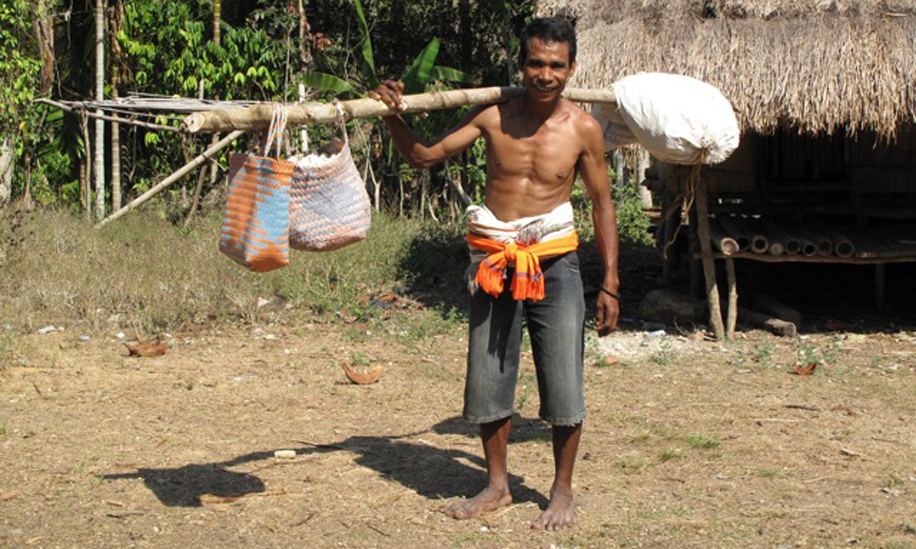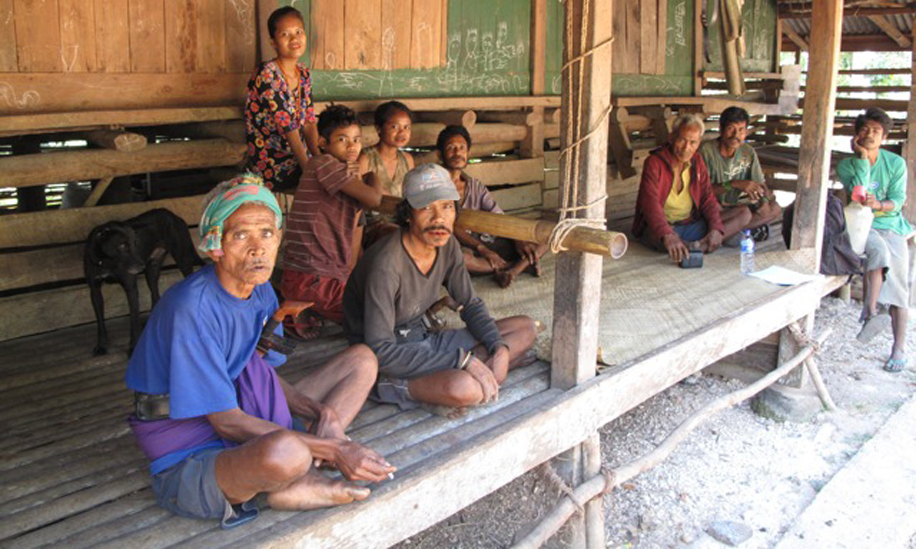Sumba Island is one of a chain of islands in the Lesser Sundas, a dry region of Eastern Indonesia. Sumba Island is known for its culture of fine ikat weavings, megalithic tombs, and ancestral beliefs. Once, it was also known for its remarkable sandalwood forests. Sumba’s forests, however, have degraded alarmingly. In 1927, forests covered half of the island; in 2002, it was less than seven percent. Today, only five fragments of the remaining forest are greater than 2,500 hectares (6,178 acres) each, all of them in Manupeu Tanadaru National Park. This forest contains thick stands of rare sandalwood. It is the last remaining habitat of a number of endemic frog, butterfly, and reptile species, and also ten endemic bird species.
Hupumada is one of 22 villages that border the national park in a special enclave called “Lahona.” The area was established long before the park, and the government allows only these people to live within the park boundaries. The village is accessible only by dirt track, and there is no electricity. Generally, villagers use kerosene lamps at night so women can weave (to make money) and children can study. However, they must sell firewood from the forest to get cash to buy kerosene. Community members are very interested in solar power, which would let them be productive at night without collecting and selling firewood.
Seacology is funding this much-needed utility. In return, the community will protect 6,000 hectares (14,826 acres) of the national park surrounding the village for at least 10 years. Village leaders will enforce the no-take rule with traditional sanctions, such as payment of a fine with pigs. They will help villagers to plant timber and fruit trees on village land to increase their self-sufficiency.




